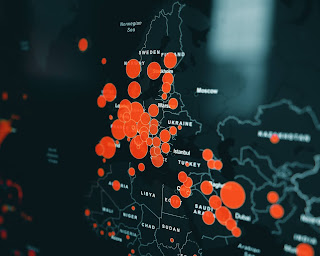Data visualization in technology
When it comes to the comprehensiveness of information, there cannot be any comparison to visual representation. The human brain responds to the visual representation of any data, theory, or even abstract idea actively and instantly. This is the reason why scholars have been polishing the art of data visualization over centuries and have been successful in devising several tools to do so.
Today we have graphs, charts, maps, etc. to represent data in academics, science, business analysis, marketing, and even in our daily life. However, it would be wrong to assume that the tools which are already in use are adequate to represent all kinds and volumes of data. Sometimes, data visualizers might need to combine two or more data visualization tools to represent a particular piece of information in the right way. Sometimes, the data visualizers might need to think of a completely new tool to represent the data that would appeal to the audience the most. This compulsion to work upon new data visualization techniques is increasing day by day as the volume of relevant data has increased in almost every sphere of our lives.
Let us take the banking industry as an example. Due to the digitalization of the banking industry, the analysts responsible for assisting business decision making for the banks have started dealing with large volumes of complex data. So, to make their job easy, they take the help of innovative data visualizing techniques. Nonetheless, this technique is useful only when it has the following characteristics.
1. Comprehensive data capturing
The tool must be able to capture the entire range of data. If the tool misses any part of the data, the big picture might not be visible to the audience. As a result, there might be gaps in the information provided to the audience, and it might affect decision making adversely.
2. Accuracy of data
The tool must be able to represent accurate data. The data should not get rounded off in the process of making it visually relevant. A decision made based on inaccurate data can be especially dangerous for the concerned business.
3. Visual appeal
It might sound superficial, but it is important. The human brain captures visually appealing images in a better and faster way. If the image in front of us is boring, we would be disinterested in decision making as well.
4. Non-ambiguity
Now, in the quest to make
the visualization appealing, it should not lose relevance. Sometimes, the data
visualization tool might try to represent data in a comprehensive,
accurate, and visually appealing way, but the result might become ambiguous or
open for interpretation, which should be avoided at any cost.


Comments
Post a Comment